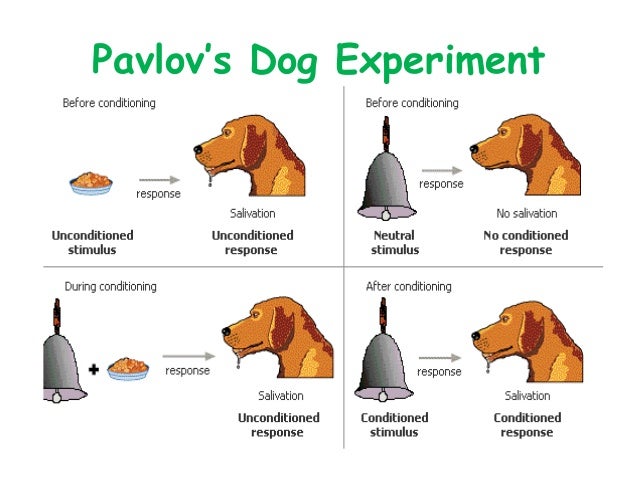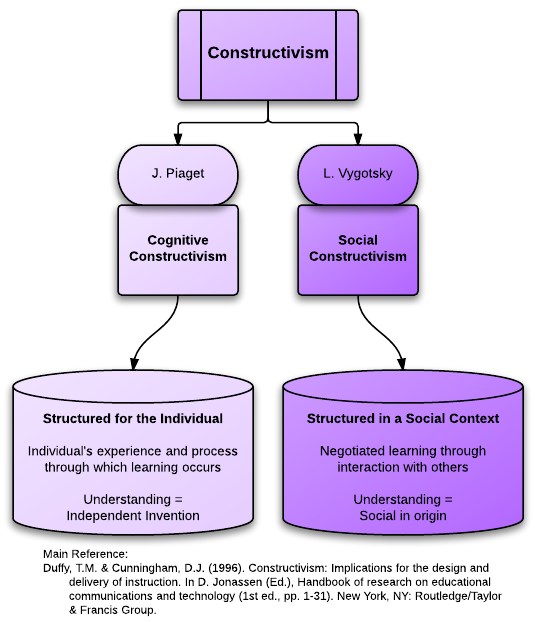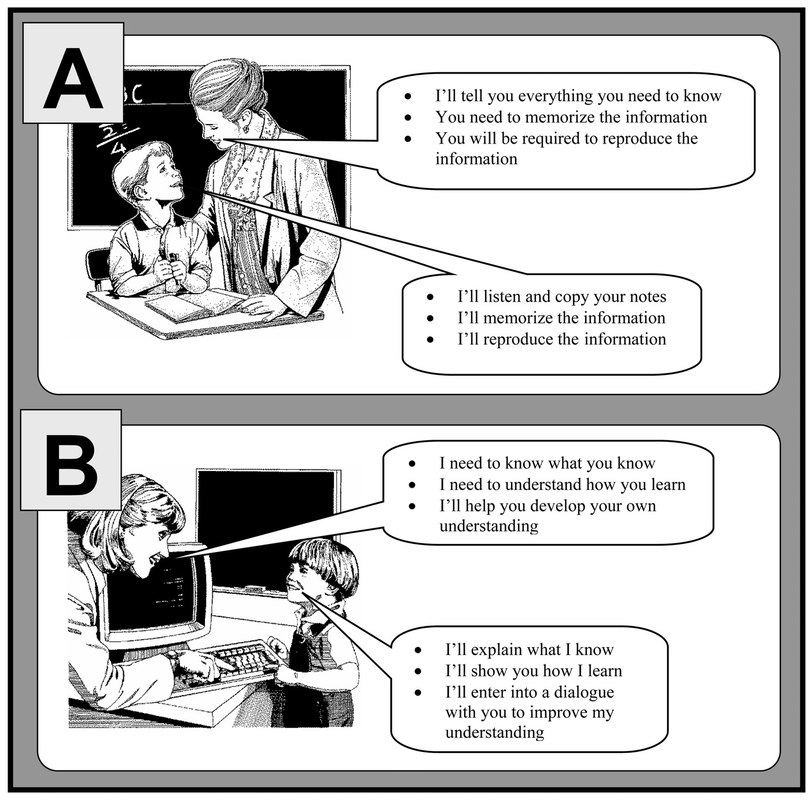http://built.unibocconi.eu/wps/wcm/connect/Site/Built/Home/EdTech+Forum+2017
Teachers are now aware that teaching and learning can be enhanced by technology. Likewise, technology begins to change the vision of education because it appears to be an important component of a teaching-learning program. Nowadays, many teachers are using technology along with the application of appropriate theories of learning. 
https://azednews.com/technology-classroom-increases-creativity-decreases-discipline-issues/
Technology allows the students and teachers to live within four pillars of education: learning to be, learning to do, learning to live together, and learning learn. Because of these, Information and Communication Technology focused on computer assisted instruction. Both teachers and students use the computer to learn new ideas and recent researches, which are unknown and search about them. New innovation of technology is shaping the future of higher education and influencing teaching methodologies. The globalization of technology continues to change thew way we live and work. Teaching and learning are more effective when technlogy is added to the classroom and when used to improve students' larning and to help them reach their goals. Effective use of technology will also benefit the learning process if it motivates the learner and provides an authentic learning experience that continues beyond the virtual or physical classroom. Also teachers have to be aware of the interest students have in the technological world, and take thisinterest and use it as s means to develop competitive individuals for society, the country and the world.
Photo by: Junelyn Bei Antonio
LEARNING THEORIES
How teachers view the role
of technology and media in the classroom depends very much on their belief
about how people learn. Over the past half-century, there have been several
dominant theories of learning. Each has implications for instruction in general
and for the use of technology and media in particular. Driscoll (2005)
discusses learning theories and their impact on teaching decisions in greater
detail.
The
analysis and application of the learning theories will also determine the
appropriate technology application in classrooms to ensure the efficient and
effective integration. Technology made a lot modification on how teachers and
students access, gather analyze, present and transmit information them
more power in the classroom (Dooley, 1999)
Learning
theories provide a pedagogical basis for understanding how students learn. As
McLeod notes:
Each theoretical perspective offers benefits
to designers but the perspectives must be taken into context depending upon the
situation, performance goals(s), and multi-dimensional, some combination of the
three learning theories and perhaps others should be considered and incorporsted
ontothe desgn process to provide optimal learning.
Behaviorism
* Behaviorism is a theory of animal and human
learning that focuses on objectively observable behaviors and discounts mental
activities. Behavior theorists define learning as nothing more than the
acquisition of new behavior.
* Why teach – Behaviorist schools are concerned
with the modification and shaping of students’ behavior by providing for a
favorable environment, since they believe that they are product of their
environment.
* What to teach – Behaviorist teachers teach
students to respond favorably to various stimuli in the environment.
* How to teach - Behaviorist teachers “ought to
arrange environmental conditions so that students can make the responses to
stimuli.
Ex. Light, temperature, arrangement of furniture, size and quantity of visual aids.
(Purita P. Bilbao, Ed.D, Brenda B.
Corpuz, Ph.D., The Teaching Profession 2nd Edition, 2012)
·
Experiments of behaviorists’ identity
conditioning as a universal learning process. There are two different types of
conditioning, each yielding a different behavioral pattern:
1. Classic conditioning occurs when a
natural reflex responds to a stimulus. The most popular example is Pavlov’s
observation that dogs salivate when they eat or even see food. Essentially,
animals and people are biologically “wired” so that a certain stimulus will
produce a specific response.
https://www.nobelprize.org/nobel_prizes/medicine/laureates/1904/pavlov-bio.html
Ivan Pavlov
-
A Russian
physiologist; well known for his work in classical conditioning/stimulus
substitution.
 2. Behavioral operant conditioning occurs
when a response to a stimulus is reinforced. Basically operant conditioning is
a simple feedback system; I f a reward or reinforcement follows the response to
a stimulus, then the response becomes more probable in the future. 2. Behavioral operant conditioning occurs
when a response to a stimulus is reinforced. Basically operant conditioning is
a simple feedback system; I f a reward or reinforcement follows the response to
a stimulus, then the response becomes more probable in the future. https://www.slideshare.net/harshpandya311/classical-conditioning-38320344 https://www.slideshare.net/harshpandya311/classical-conditioning-38320344
In behaviorism, the learners are
passive and just responding to stimuli. The teachers design the learning
environment. They shape the learners’ behavior by positive and negative
reinforcement. The teacher presents the information, then the students
demonstrate their understanding from the teacher’s presentation. Students’
assessment is in the form of tests.
In
behaviorism, the following are the relevant educational technology which can be
used.
1. Observations of learners are bases for
identifying materials for reinforcing learning.
Ex. Cards, mathematics counters, picture and charts
2. Selecting stimulus. Some learners need varying
stimuli in order to learn.
3. Educational technology used by the teacher can
help elicit the outcomes which are easily observed.
Possible Learning Activities in Behaviorism
1.Instructional cues to elicit correct response.
Ex. hand signals, signage’s like danger, speak softly etc.
2.Practice paired with target stimuli.
3.Reinforcement for correct responses.
4.Building profiency.
Cognitivism
Key Concepts
The cognitivist revolution
replaced behaviorism in 1960s as the dominant paradigm. Cognitivism focuses on
the inner mental activities – opening the “black box" of the human mind is
valuable and necessary for understanding how people learn. Mental processes
such as thinking, memory, knowing, and problem-solving need to be explored.
Knowledge can be seen as schema or symbolic mental constructions. Learning is
defined as change in a learner’s schemata.
 http://fifiselearning.blogspot.com/ http://fifiselearning.blogspot.com/
Key Words (and Definitions)
*Schema
Theory is defined as a mental representation of something previously known,
including actions, events, and perspectives. These are the building blocks of
knowledge.
*Gestalt
Theory states that perceptions are entirely dependent upon the whole and
not of the individual parts. All of our understanding is built upon whole
objects, events and not of their small parts.
*Equilibrium
is the state in which our minds exists before we learn something new. The
process, called "adaption" by Piaget, flows as follows:
Equilibrium-->New
Situation/Schema-->Disequilibrium-->Accomodation-->Assimilation
Relevance of
Cognitivism to Educational Technology
* Conduct task analysis and learner analysis
* Create a test
* Create learning materials according to any of
the Instructional Design Models
Applications in
Educational Technology
The best way for a teacher to
approach using cognitivism in the classroom is to ask questions to help
students refine their thinking and recognize where they may be wrong. You want
to approach topics that they may think they already know and introduce some new
aspect to make them redefine something. Alternately, for entirely new topics,
you want to draw upon background knowledge before you challenge existing ideas
(schema) and create learning toward amplification or change of those schemata.
Some great examples of Cognitivism
in educational technology can be found in online games and reinforcement
activities, such as sorting games, puzzles, and flashcards. These games will
often present prior knowledge schema in a different method, thus creating
disequilibrium and a need to adapt and learn the new information in order to
continue. For example, the online resource Quizlet creates a means of listing
vocabulary, pictures, and even mathematical procedures and then taking that
list and producing several ways of practicing the previously known schemata,
including the incorporation of audio and video.
Constructivism
Constructivism, a derivative of cognitivism, focuses on the
active role of the learner in the process of learning. Constructivism has two major branches of
thought: Cognitivist constructivism that focuses on the individual's efforts to
acquire knowledge, and sociocultural constructivism that talks about the
acquisition or enculturation of knowledge by a social group. They are not
mutually exclusive, as learners are individuals who are part of society, and can
acquire knowledge through either channel.
Key Concepts
Key Words Defined
Two ApproachesApplications in Educational Technology
Constructivist classrooms are popular in the current era of education. Many constructivist activites are being presented in professional development in-service and are being used effectively within instructional pedagogy. Examples include mind mapping, KWL charts, research projects, field trips, and collaborative class activities including discussion, peer critiquing, and sharing.
Also, using Google Apps for Education enables a classroom to use online student-led collaborative opportunities without cost. With the feature to assign groups of students to particular things, students can work together at the same time on items such as a collaborative paper or Sliderocket presentation on Google Drive, a collaborative portfolio or website on Google Sites or even a group blog project on Blogspot, all of which (if using the official Google Apps for Education setup) is controllable by the teacher.
|


